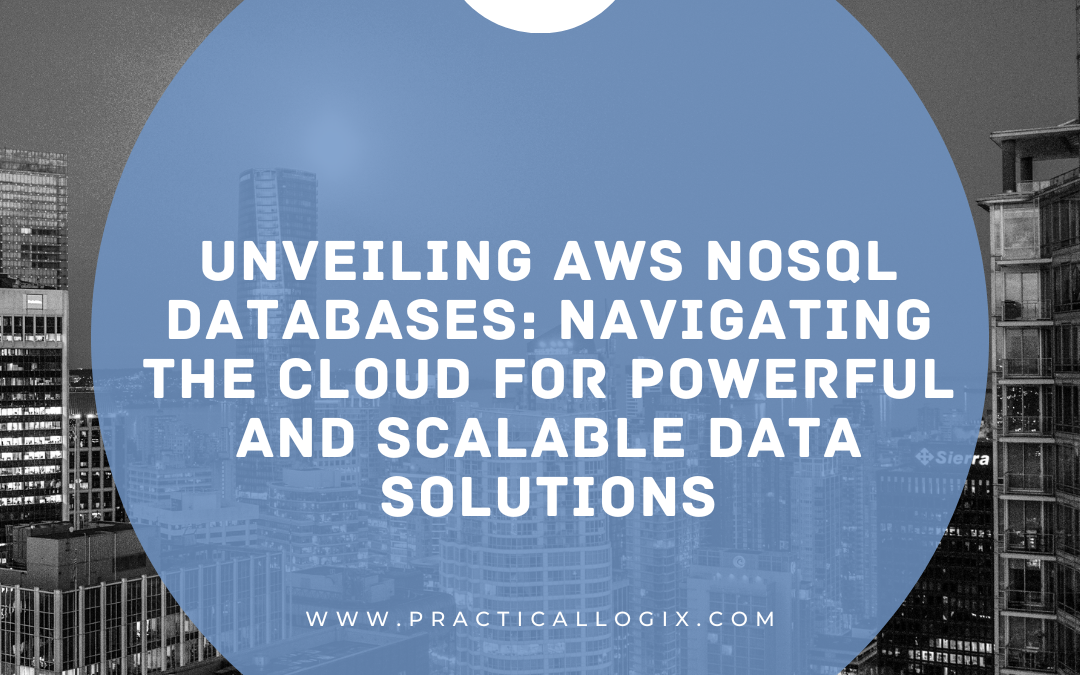In the ever-evolving realm of cloud computing, businesses are continuously searching for robust and scalable solutions to effectively manage their data. Amazon Web Services (AWS), a leading provider of cloud services, offers a comprehensive suite of powerful NoSQL databases that cater to diverse data management needs. In this blog post, we will delve into the world of AWS NoSQL databases, exploring their features, benefits, and how they empower businesses to navigate the cloud for robust and scalable data solutions.
DynamoDB: Combining Power and Simplicity in a Single Package
At the forefront of AWS NoSQL databases stands Amazon DynamoDB, a fully managed and serverless database service. DynamoDB is designed to seamlessly scale, enabling businesses to handle varying workloads without manual intervention. With automatic scaling, users can focus on application development without concerns about the underlying infrastructure.
DynamoDB supports both key-value and document data models, providing flexibility for a variety of use cases. Its low-latency performance ensures rapid access to data, making it an ideal choice for high-throughput applications such as gaming, e-commerce, and real-time analytics.
Amazon DocumentDB: A MongoDB-Compatible Document Database
For organizations familiar with MongoDB, Amazon DocumentDB offers a seamless transition to the cloud. As a MongoDB-compatible document database, it allows users to run existing MongoDB applications without any modifications. This compatibility simplifies the migration of MongoDB workloads to the AWS cloud, while benefiting from the managed services and scalability provided by Amazon DocumentDB.
With features like automated backups, scalable storage, and data replication across multiple regions, Amazon DocumentDB ensures data durability, availability, and performance for document-oriented applications.
Amazon Keyspaces: A Scalable and Managed Cassandra Database
For those requiring the power of Apache Cassandra in a managed environment, AWS presents Amazon Keyspaces. Built on the foundation of Apache Cassandra, Amazon Keyspaces provides a scalable, highly available, and fully managed Cassandra-compatible database.
With features like automatic backups, encryption at rest, and seamless integration with AWS Identity and Access Management (IAM), Amazon Keyspaces simplifies the management of Cassandra databases, allowing businesses to focus on application development and innovation.
Amazon Neptune: A Managed Graph Database
Navigating intricate data relationships is made easier with Amazon Neptune, AWS’s managed graph database service. Whether it’s social networks, fraud detection, or knowledge graphs, Neptune supports both Property Graph and RDF graph models, offering flexibility for diverse graph database use cases.
With features like high availability, automatic backups, and compatibility with popular graph query languages, Amazon Neptune empowers businesses to uncover valuable insights from interconnected data structures.
Choosing the Right AWS NoSQL Database for Your Requirements
Selecting the appropriate AWS NoSQL database depends on the specific requirements of your application. DynamoDB is an excellent choice for applications that demand high performance and seamless scalability. Amazon DocumentDB is perfect for MongoDB users looking to leverage the cloud without sacrificing compatibility. Amazon Keyspaces is tailored for those seeking a managed Cassandra database, while Amazon Neptune caters to the complexities of graph-based data.
Conclusion: Empowering Cloud-Based Data Solutions
In conclusion, AWS NoSQL databases provide powerful and scalable data solutions in the cloud. Whether your application requires the simplicity and performance of key-value stores, the flexibility of document-oriented databases, the robustness of Apache Cassandra, or the intricacies of graph databases, AWS NoSQL offerings provide a diverse range of options. By leveraging these managed services, businesses can navigate the cloud with confidence, knowing that their data is in the hands of a reliable and scalable infrastructure, empowering them to focus on innovation and growth in the ever-expanding digital landscape.


